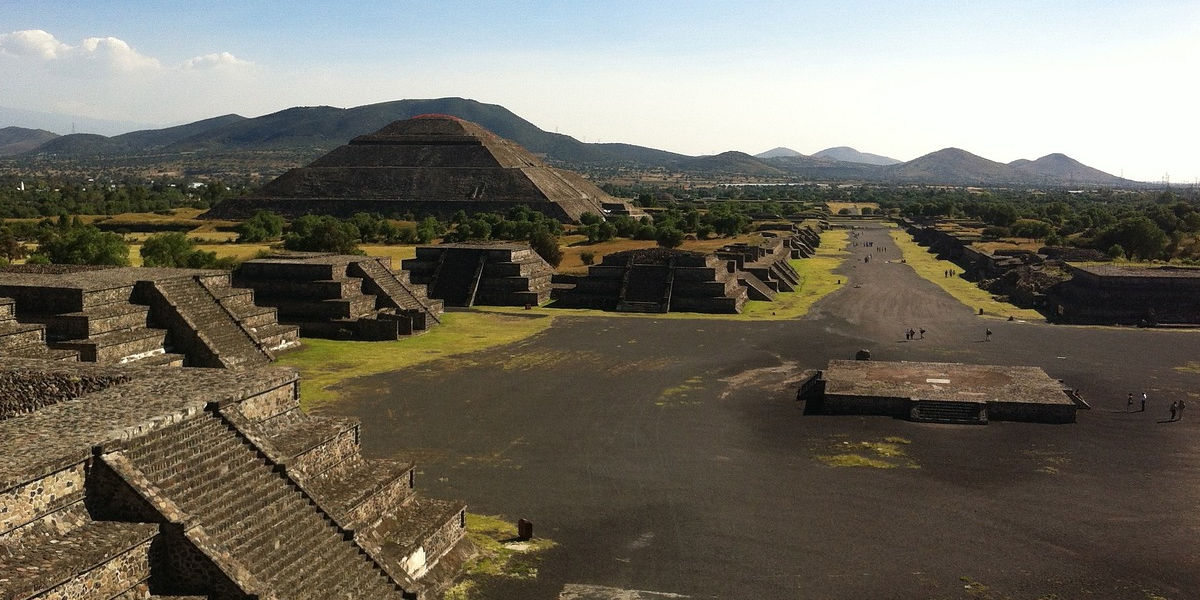The word 'pyramid' instantly conjures up our imagination with a vivid imagery of the golden sands of Egypt and the ancient, mysterious sphinx. Yet, the fact is that the history of pyramids extends even beyond Egypt, ingrained deeply into the cultural fabric of various civilizations worldwide. So, indeed, the question remains - Are there pyramids outside of Egypt?
In our journey to uncover the prominence of these monumental wonders, we shall traverse through the path less taken, en route a world that houses the largest pyramids apart from those in Egypt. We are set to delve deep into the mystique of these gigantic structures, their cultural significance, architectural marvel, and the multitude of civilizations they reverberate.
Unveiling the Pyramids Beyond Egypt
As we think of pyramids, our mind almost instinctively travels to the heart of Egypt, to the very cradle of civilization. These splendid structures, which served as the final resting place of the pharaohs, are indeed a sight to behold. But the ancient pyramids, in all their magnificence and grandeur, do not only belong to Egypt. Some of the largest pyramids in the world lie hidden in plain sight, scattered in different corners of the world.
The Non-Egyptian Origins
The Mesoamerican Pyramids, overshadowing those built by their Egyptian counterparts, are an epitome of the extraordinary architectural prowess of the ancient people. The Great Pyramid of Cholula in Mexico holds the record for being the largest pyramid and indeed, the largest man-made monument ever built in the world, with a base four times the size of the Great Pyramid of Giza.
While pyramids were essentially tombs in Egypt, their roles varied in different cultures. In ancient Mesopotamia, pyramid-like structures, known as Ziggurats, became the dwelling places of the Gods. The Maya, Aztec, and Inca civilizations built pyramids as religious sites and used them for human sacrifices and other spiritual practices.
Stretching our gaze to the far East, we find pyramid structures in ancient China, constructed as burial sites for emperors and their consorts. The Maoling mausoleum of Emperor Wu of Han is one prominent example. The mausoleums, though not as visually striking as the Egyptian or Mexican pyramids, are reminiscent of the same purpose they served - to venerate the dead.
We have thus embarked on a fascinating journey to explore the pyramids beyond Egypt, touching on various civilizations and cultures. Stay tuned as we keep peeling off the layers, revealing the vibrant tapestry of human history that these pyramids represent.
The Grandeur of Ancient Egypt
Perhaps the most iconic representations of ancient Egypt come in the shape of pyramids. These massive stone structures, built over a span of 1500 years, served as the final resting place for the country's pharaohs, and their construction reveals a considerable amount about the sophistication of Egyptian society in terms of both technology and social organization.
The Great Pyramid of Giza, the largest of Egypt's pyramids and one of the Seven Wonders of the Ancient World, has been the subject of more speculation and study than any other pyramid. It is estimated to contain over 2.3 million individual blocks of stone, and it is the only one of the Seven Wonders to remain relatively intact.
Pyramids simply do not belong to Egypt alone, though. Mesoamerican cultures like the Aztecs and the Mayans also built these grandiose structures, although they were used for different purposes.
But, the awe-inspiring sight of these majestic tombs is not limited to the golden sands of Egypt or the dense jungles of Mesoamerica alone.
The Global Pyramid Phenomenon
The entire globe is enriched with the beauty and mystery of pyramids, one can experience their magnificence from Central America with its Moon and Sun Pyramids in Mexico to Sudan's ancient Nubian structures which still stand intact. In Indonesia, the Gunung Padang Pyramid is believed to be even older, with preliminary dating suggesting it could be up to 20,000 years old.
Even in Europe, we can find pyramids. They're not large stone structures like those found in Egypt, but they are burial mounds nonetheless. The area in and around Rome, Italy, is home to several of these pyramid-like structures, the most significant being the Pyramid of Cestius.
But what is it about pyramids that is so captivating? Is it their grandeur, the beauty and balance of their geometrical shape, or the origins that lie buried under the sands of time?
The Enigmatic Allure of Pyramids
The allure of pyramids lies not just in their size and architectural prowess, but also in the historical legacy, they represent. Not to forget, the stories of riches and curses associated with pyramids add an aura of fascination to them. An air of mystery and intrigue hangs around them, an enigma that we, as a race, are still trying to decode. Even today, researchers and archaeologists worldwide are working to unveil the secrets within these colossal landmarks.
In conclusion, the pyramids are not just majestic tombs scattered beyond Egypt's golden sands; they are time capsules, allowing us a glimpse into past civilizations' grandeur and complexity. Each pyramid, standing tall in all its enigma and marvel, is a testament to human creativity, resilience, and ambition, drawing us into the fascinating worlds beyond our knowledge's realms.




